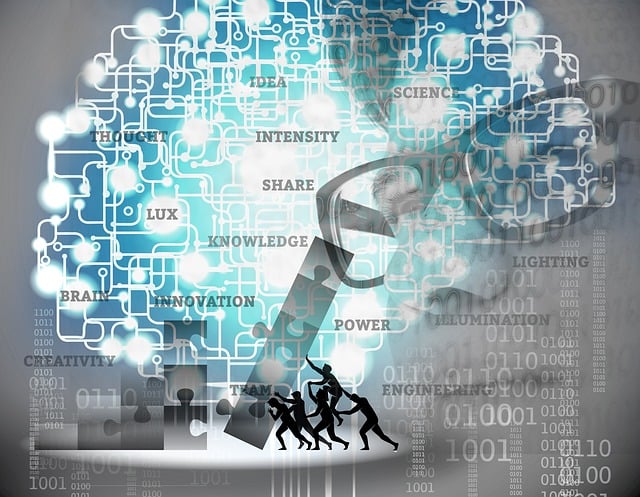The Intricacies of Trading Bots: Unveiling the Future of Automated Trading
Author: Jameson Richman Expert
Published On: 2024-08-13
Prepared by Jameson Richman and our team of experts with over a decade of experience in cryptocurrency and digital asset analysis. Learn more about us.
In the ever-evolving landscape of financial markets, technology continues to play a transformative role. Among the most fascinating advancements are trading bots, sophisticated software applications designed to automate trading decisions. As an investor and enthusiast in this sphere, I find the emergence of trading bots both intriguing and thought-provoking. This article will delve into the mechanics of trading bots, their advantages and disadvantages, a comparison with traditional trading, the various types available, and ultimately what the future holds for this revolutionary tool.

Understanding Trading Bots
At its core, a trading bot is a program that connects to financial exchanges and executes trades on behalf of the user based on predefined criteria. The simplicity of this definition belies the complexity and variety of algorithms that can drive these robots. Trading bots can be tailored to execute various strategies, from arbitrage opportunities to trend following and market-making strategies.
How Do Trading Bots Work?
Trading bots operate through algorithms, which are sets of rules or guidelines set forth by the user. These rules dictate when to enter or exit trades, and under what conditions. A well-designed trading bot can analyze vast mountains of data in real time, responding to market changes at speeds that are unfathomable for a human trader. The performance of a trading bot is heavily reliant on the quality of its algorithm, which has led to the proliferation of proprietary systems developed by individual traders and companies alike.
Key Components of Trading Bots
- Market Analysis: Bots utilize various analytical tools, including technical indicators and chart patterns, to inform their trading decisions.
- Order Execution: Once the bot identifies a trading opportunity, it automatically executes orders on the trader’s behalf.
- Risk Management: Good trading bots incorporate risk management techniques to minimize potential losses, such as setting stop-loss limits.
Algorithm Design
The heart of a trading bot lies in its algorithm. For example, a bot designed around a moving average crossover strategy might buy an asset when its short-term moving average crosses above its long-term moving average, and sell when the opposite occurs. As someone who appreciates the intricacies of algorithm design, I find it remarkable how a well-crafted algorithm can yield profit through systematic analysis and strategy execution.
Advantages of Using Trading Bots
The appeal of trading bots lies in their ability to deliver several advantages over traditional trading methods. Here are a few compelling reasons why traders are increasingly turning to these automated systems:
24/7 Trading
One of the most significant benefits of trading bots is their capability to operate around the clock, enabling traders to capitalize on opportunities in global markets without being physically present. For a trader with other commitments or those in different time zones, this feature is invaluable. Personally, I cherish the freedom this affords—knowing that I can engage in trading anytime while attending to life’s other responsibilities.
Emotionless Trading
Human emotions can wreak havoc on trading strategies. Fear and greed often drive traders to make irrational decisions, but trading bots are not influenced by emotions. They follow the pre-set rules without deviating, which can lead to a more disciplined trading approach. This quality is something I think is crucial in the financial markets, where consistency and rationality often separate successful traders from their unsuccessful counterparts.
Speed and Efficiency
In trading, timing is everything. Trading bots can analyze market conditions and execute trades in milliseconds, far surpassing human reaction times. This level of speed can be the difference between profit and loss, particularly in highly volatile markets. From my perspective, the blend of efficiency and precision that bots can offer is truly revolutionary.
Disadvantages of Trading Bots
Despite the myriad benefits, trading bots are not without their drawbacks. Understanding these limitations is essential for any trader considering automated systems.
Technical Failures
Trading bots are software, and like any program, they can encounter bugs, glitches, or connectivity issues. A failure to execute critical trades due to technical malfunctions can result in significant losses, underscoring the need for reliable testing and oversight. Personally, I always advocate for a hybrid approach, where one keeps a close eye on bot performance and intervenes when necessary.
Market Trends and Adaptability
Markets are dynamic, and a strategy that worked well in the past might not yield the same results in the future. Trading bots operate on algorithms that are often based on historical data. If market conditions shift significantly, the bot may not adapt quickly enough to these changes. I believe that ongoing evaluation and adjustment of trading strategies are essential for successful long-term trading, which often requires human insight.

Types of Trading Bots
There are various types of trading bots available, each catering to different trading strategies and market conditions:
1. Arbitrage Bots
These bots exploit price discrepancies between different exchanges. By simultaneously buying an asset on one exchange and selling it on another for a higher price, they capitalize on small price differences. I find this strategy particularly fascinating, as it exemplifies how technology can enable traders to maximize profit margins in an efficient manner.
2. Market-Making Bots
Market-making bots provide liquidity to the market by continuously placing limit orders. They aim to profit from the spread between the buy and sell price. This type of bot is widely seen in high-frequency trading environments.
3. Trend-Following Bots
These bots analyze market trends, executing trades based on rallying patterns. A trending market can provide lucrative opportunities for trend-following bots, which systematically buy and sell assets depending on market momentum.
4. Portfolio Management Bots
These bots help manage a diversified portfolio by reallocating assets based on market performance or user-defined criteria. They aid in maintaining balance, ensuring that the investment remains aligned with the trader’s risk tolerance and preferences. From my point of view, employing portfolio management bots can significantly simplify the investment process.
The Future of Trading Bots
As technology continues to advance, the future of trading bots holds immense promise. With artificial intelligence and machine learning being integrated into trading algorithms, bots are expected to become more sophisticated, dynamic, and capable of adapting to market conditions in real-time.
Increased Customization
Moving forward, we can expect trading bots to offer greater customization options, allowing users to tailor them to their specific trading styles and risk appetites. The convergence of user-friendly interfaces with complex algorithms could democratize access to advanced trading strategies.
Improved Analytics
Data analytics is poised to play a pivotal role in the evolution of trading bots. As the volume of market data expands, traders can leverage enhanced analytical tools to inform their decisions and optimize bot performance. I envision a future where even amateur traders can benefit from sophisticated data analysis, leveling the playing field.
Conclusion
In summary, trading bots are revolutionizing the way we approach trading, bridging the gap between technology and financial markets. While they offer numerous advantages, it’s crucial to remain cognizant of their inherent limitations. As an advocate for informed trading, my opinion is that a balanced approach—combining automated systems with human oversight—will yield the best results in the world of investing. The future of trading bots is bright, and as technology evolves, so too will our strategies and understanding of financial markets. As we stand at this precipice of innovation, I can’t help but feel a sense of excitement about where the landscape of trading is headed.